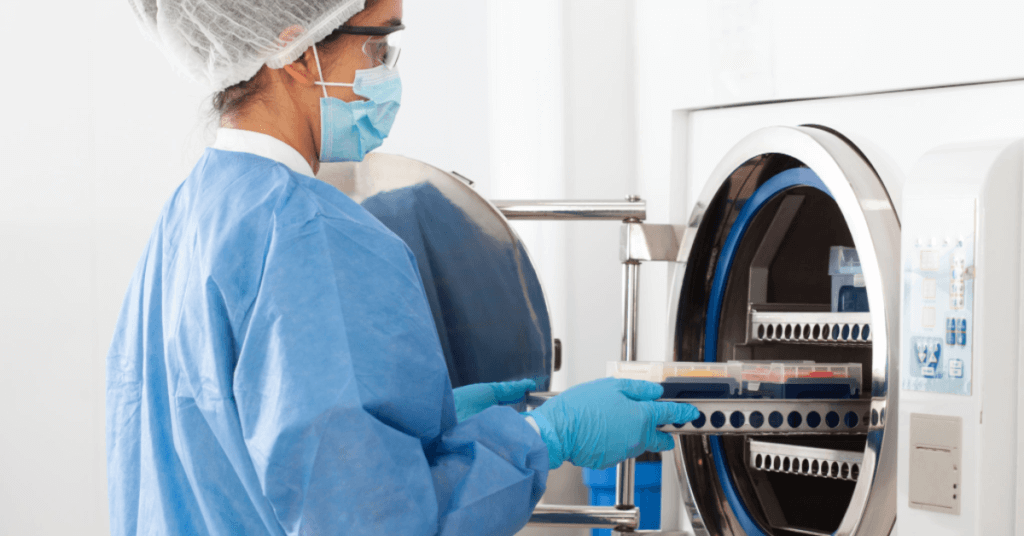Social Freezing: Introduction to a New Concept

Social freezing, also known as oocyte cryopreservation, is a relatively new concept that has gained attention in society in recent years. It refers to the process of preserving eggs or sperm for future use, primarily for individuals who wish to delay childbearing and avoid involuntary childlessness. The freezing of preserved oocytes and sperm is one of the social indications of social freezing, which has become more common among individuals who are not ready to start a family yet.
Issues surrounding social freezing have been widely discussed in academic literature, with increasing research and discussion on the societal implications and concerns of the topic. Google Scholar shows a growing number of publications addressing these issues. A survey conducted on the general public’s attitudes towards social freezing revealed conflicting views, with contextualism and gender regime being important factors in individual preference.
What Is Social Freezing?
Social freezing, also known as oocyte cryopreservation, is a process where eggs or surplus oocytes are extracted from an individual and then frozen for future use. This procedure allows individuals to preserve their fertility potential while delaying parenthood, reducing the risk of involuntary childlessness. The preserved oocytes can be stored for several years until the individual decides to conceive.
Understanding the treatment process
The treatment process for social freezing, also known as oocyte cryopreservation, involves a series of medical technologies and procedures that require careful analysis and discussion among participants. It is important to understand that social freezing is not a simple procedure, but rather a complex process that involves several stages. The first step in the treatment process is the initial consultation, where participants discuss their options with a healthcare provider. During this stage, it is essential to have an open and honest conversation about the risks, benefits, and potential outcomes of social freezing. Research studies have shown that social freezing can be successful when combined with IVF.
Acceptance and attitude formation towards oocyte cryopreservation technology, also known as social freezing, are crucial in making the treatment process successful. Participants’ attitudes towards the research on ivf and social freezing must be positive for them to feel comfortable with the idea of oocyte cryopreservation and understand why they are pursuing this option. Education and information support are necessary to help participants understand the procedure and make informed decisions about ivf and social freezing. This includes providing detailed information about how oocyte cryopreservation works, what to expect during the procedure, and any potential complications or risks associated with it.
Research has demonstrated that the level of care and support provided to participants during treatment can have a significant effect on their overall experience. Participants who receive emotional support from physicians, as well as family members and friends, report higher levels of satisfaction than those who do not. Positive attitudes towards treatment and support from mental health professionals can also contribute to a more positive experience.
Technology plays a significant role in the treatment process, from the initial consultation to the actual procedure and follow-up care. Advanced medical technologies such as ultrasound imaging are used to monitor follicle growth during ovarian stimulation while vitrification technology is used for cryopreservation of eggs or embryos. These technological advancements have made social freezing safer, more effective, and accessible. Additionally, preserved oocytes can now be used for IVF procedures thanks to research and study in the field.
Research on oocyte cryopreservation, or social freezing, continues to work towards improving the treatment process and outcomes for participants. Ongoing studies focus on developing new protocols for ovarian stimulation or improving vitrification techniques by identifying optimal cooling rates or cryoprotectants to ensure high-quality preserved oocytes. These studies are crucial in advancing the field of IVF and providing more options for individuals seeking fertility preservation.

Hormone stimulation in social freezing
Increasingly, women are choosing to delay starting a family for various reasons such as career development or financial stability. However, the biological clock continues ticking, and after a certain age, the quality and quantity of oocytes decrease. To address this issue, many women opt for oocyte cryopreservation (also known as egg freezing) to preserve their fertility for late parenthood or in vitro fertilization (IVF). Hormone stimulation is a crucial step in the oocyte cryopreservation process.
The Goal of Hormone Stimulation
The goal of hormone stimulation is to increase the number of oocytes that can be retrieved during the egg retrieval procedure for oocyte cryopreservation or in vitro fertilization (IVF). Typically, women produce one mature oocyte per menstrual cycle; however, hormone stimulation aims to stimulate the ovaries to produce multiple oocytes instead. This process involves daily injections of follicle-stimulating hormone (FSH) and luteinizing hormone (LH). These hormones help control ovulation and encourage multiple follicles (fluid-filled sacs containing immature oocytes) to grow simultaneously, providing hope for those seeking parenthood.
Length of Hormone Stimulation
The length of hormone stimulation for IVF varies depending on each woman’s individual situation but typically lasts for 8-14 days to stimulate the growth of follicles that contain oocytes. During this time, regular monitoring appointments are scheduled with an ultrasound scan and blood tests to track follicle growth and hormone levels. This process is especially important for women who wish to undergo oocyte cryopreservation for late parenthood.
Side Effects
While hormone stimulation for IVF is generally safe and effective, it does have some side effects. Women may experience bloating due to swelling in the abdomen from growing follicles or discomfort at the injection site. Mood swings are common because hormones play a significant role in regulating emotions. Factors such as oocyte cryopreservation can also affect the success of IVF, as the quality of the oocytes can impact the chances of a successful pregnancy.

Egg collection in social freezing
Egg retrieval is a necessary step in the social egg freezing process, also known as oocyte cryopreservation, which allows women to preserve their eggs for future use in IVF procedures. This option has become increasingly popular among participants who want to delay parenthood for various reasons such as career advancement or medical issues. The procedure involves stimulating the ovaries with hormones to produce many oocytes, which are then collected through a minimally invasive procedure.
The number of oocytes retrieved during the ivf process varies from participant to participant and depends on factors such as age and fertility status. However, it is common for several oocytes to be retrieved at once. These oocytes are then frozen using a technique called oocyte cryopreservation, which involves rapidly cooling them to prevent ice crystal formation that could damage the cells.
While oocyte cryopreservation allows participants to freeze their oocytes for future use in parenthood, not all of the oocytes survive the thawing process. The survival rate of thawed eggs depends on various factors such as age at retrieval and quality of the original oocytes. Therefore, it is recommended that women freeze multiple oocytes to increase their chances of having viable embryos when they decide to use them.
This article might also interest you: Fertility Success Stories
Social egg freezing, also known as oocyte cryopreservation, allows women more control over their reproductive choices and career paths. It gives them the opportunity to delay parenthood until they feel ready without worrying about declining fertility due to age-related factors. This option also enables participants to preserve their oocytes before undergoing medical treatments that affect their fertility, such as chemotherapy or radiation therapy.
The decision to undergo social egg freezing, also known as oocyte cryopreservation, is influenced by individual views on gender roles and life choices related to parenthood. While some participants view delaying childbearing through social egg freezing as empowering for women who want more control over their lives, others see it as an unnatural way of defying biology and societal norms around family planning.

Retrieval and transfer of frozen oocytes
Oocyte cryopreservation, also known as social freezing, is a process that involves the freezing and storage of a woman’s oocytes for future use in reproduction. The retrieval of preserved oocytes involves a medical procedure where the eggs are thawed and fertilized through in vitro fertilization (IVF) techniques. According to a study published on Google Scholar, an increasing number of participants are considering oocyte cryopreservation for family planning purposes. A survey conducted among women also revealed that many are interested in exploring this option for career or personal reasons.
The process of cryopreservation for unfertilized eggs has significantly improved with advancements in reproductive technology, allowing for better preservation and use of the eggs. Surplus oocytes from ovarian stimulation during IVF can also be cryopreserved and stored for future use. This offers study participants the opportunity to plan their reproductive future and have greater control over their fertility, while taking into account various factors such as age and medical history.
The cryopreservation of oocytes is a widely researched topic, with many studies involving participants who have undergone the procedure. A recent survey has shown that thawing is the most common method used for retrieving frozen oocytes. Thawing involves warming up the cryopreserved eggs to room temperature before fertilizing them with sperm. Once thawed, these eggs can be used immediately or stored for later use.
Ovarian stimulation is required before retrieving oocytes in participants of a study published in a Pubmed abstract. This process involves taking medication to stimulate egg production for cryopreservation purposes. The number of eggs retrieved depends on several factors such as age, ovarian reserve, and response to stimulation medication. Typically, 10-20 eggs are retrieved per cycle.
One potential risk associated with ovarian stimulation during oocyte retrieval is ovarian hyperstimulation syndrome (OHSS). OHSS occurs when the ovaries become swollen and painful due to an excess amount of hormones produced during ovulation induction. However, this risk can be managed with proper medical care and cryopreservation of the oocytes. Factors such as age and medical history of the participants may also affect the likelihood of OHSS.
Embryonic preservation differs from oocyte cryopreservation as it involves freezing embryos instead of unfertilized oocytes. Embryos are created by combining sperm and oocytes through IVF before being frozen for later use. The study involved participants who were informed about the full text of the procedure before consenting to undergo the process.

Fertilization in social freezing
Fertility preservation through social freezing, also known as cryopreservation, has become an increasingly popular option for participants who wish to delay childbearing until they are ready. This process involves the use of assisted reproductive technologies (ARTs) such as in vitro fertilization (IVF) to create embryos or oocytes that can be frozen and stored for later use. In this section, we will discuss fertilization in social freezing and its benefits for pf individuals.
Reproductive autonomy is a key benefit of social freezing or cryopreservation of oocytes, allowing participants to make decisions about their own fertility without being constrained by traditional gender roles or marital status. This means that women who wish to focus on their careers or personal lives before starting a family can do so without worrying about losing their chance at motherhood due to age-related infertility through pf. Men who have not yet found a partner but wish to have biological children in the future can also benefit from social freezing.
This article might also interest you: IVF Treatment and Unexplained Fertility
The success rate of live birth from cryopreservation of embryos and oocytes is comparable to that of fresh embryos, with some studies suggesting that frozen embryos may even have a higher success rate. This means that participants who choose to freeze their embryos or oocytes for later use have a high chance of achieving pregnancy when they are ready. It is important to note that the full text of the process does not involve the destruction of unborn life, as embryos and oocytes are frozen rather than discarded.
While individual religiosity and attitudes towards cryopreservation may play a role in the decision of participants to pursue social freezing, it is important to remember that this process, which involves the cryopreservation of oocytes, does not go against any religious beliefs as it does not involve the destruction of unborn life. In fact, many religious leaders support fertility preservation through ARTs such as IVF and cryopreservation as it allows individuals to fulfill their desire for parenthood while adhering to their faith.
This article might also interest you: Bad Egg Quality

Risks and side effects of egg freezing for mother and child
Egg freezing, also known as oocyte cryopreservation, is a process that allows women to preserve their eggs or oocytes for future use. This procedure has become increasingly popular in recent years, especially among participants who wish to delay motherhood or those undergoing medical treatments that may affect their fertility. While egg freezing offers several benefits, it also comes with certain risks and side effects that women should be aware of before undergoing the procedure. For more information on the full text regarding the risks and benefits of egg freezing, interested readers can search on Google Scholar.
No Guarantee of Successful Pregnancy
One of the most significant risks associated with oocyte cryopreservation is that it may not guarantee a successful pregnancy. While frozen oocytes can remain viable for many years, there is no guarantee that they will result in a successful pregnancy when used later on. In fact, studies have shown that the success rates for using frozen oocytes are lower than those for fresh oocytes. Participants who undergo the egg retrieval process may still face infertility issues even after having their oocytes cryopreserved. For more information, please refer to the full text.
Hormonal Side Effects
The egg retrieval process involves taking hormones to stimulate the ovaries to produce multiple eggs at once, also known as oocytes. While this can increase the chances of harvesting viable eggs for cryopreservation, it can also cause hormonal side effects such as headaches, mood swings, and ovarian hyperstimulation syndrome (OHSS). OHSS is a potentially life-threatening condition characterized by severe abdominal pain, nausea, vomiting, and bloating that may discourage participants with negative attitudes towards the process.
Increased Risk of Birth Defects
Children born from cryopreserved oocytes may have a slightly higher risk of birth defects compared to those conceived naturally or through fresh IVF cycles, according to a study involving a large number of participants. This increased risk could be due to various factors such as genetic abnormalities in the embryos or damage caused during the cryopreservation and thawing process. For more information, please refer to the full text of the study.
Pregnancy Complications
Delaying motherhood through oocyte cryopreservation, also known as social freezing, may increase the risk of pregnancy complications such as gestational diabetes, hypertension, and preterm birth. The older a participant gets when she decides to use her cryopreserved oocytes, the higher the risk of these complications. Women with positive attitudes towards social freezing may opt for this method of fertility preservation after cancer treatments that affect their fertility, but they may also face a higher risk of pregnancy complications.

Medical risks of pregnancy at an advanced age and social egg freezing
Delayed childbearing has become increasingly common in recent years, with many women choosing to focus on their careers or personal lives before starting a family. However, this decision can come with significant medical risks for both the mother and child. In this section, we will explore the potential harm of late motherhood or late parenthood and how social egg freezing may offer an alternative solution. Cryopreservation of oocytes is a viable option for participants who wish to preserve their fertility for future use. For more information, please refer to the full text.
Fertility Decline and Maternal Age
Fertility decline is a natural process that occurs with age, and maternal age is a significant factor in reproductive health. As women age, the quality and quantity of their oocytes decrease, making it more difficult to conceive naturally. According to the American Society for Reproductive Medicine (ASRM), fertility begins to decline significantly after the age of 35. By age 40, fertility rates drop by half, and by age 45, they drop by nearly 95%. Participants who are aware of this may consider cryopreservation of their oocytes for future use. Acceptance of this option can provide peace of mind for those who wish to start a family later in life.
This Article might also be interesting for you: Premature Menopause
Medical Complications during Pregnancy
Delayed childbearing also increases the risk of medical complications during pregnancy. Women over the age of 35, who are the participants in various studies according to Google Scholar, are more likely to experience gestational diabetes, high blood pressure, placenta previa (when the placenta covers part or all of the cervix), preterm labor, stillbirths or miscarriages than younger women. Babies born to older mothers have a higher risk of chromosomal abnormalities like Down syndrome, which is why oocytes cryopreservation is being encouraged as an option for women who want to delay pregnancy.
Social Egg Freezing as an Alternative Solution
Social egg freezing, also known as oocyte cryopreservation, offers women the chance to preserve their future fertility by freezing their eggs when they are younger and healthier for use later in life. This option allows participants to delay childbearing without compromising their reproductive health or risking potential harm to themselves or their children. The acceptance of this method has increased as more women become aware of the benefits of oocyte cryopreservation.
However, it’s important to note that while social egg freezing or oocyte cryopreservation may offer a viable solution for some women who want to delay childbearing; it does not guarantee a successful pregnancy later on. The success rate depends on various factors, including the age of the woman at the time of egg freezing, her overall reproductive health, and studies published on Google Scholar have shown that participants in social egg freezing programs should be counseled on the limitations and uncertainties of this technology.
Encouraging Patients to Consider Reproductive Options
According to Acta Obstetricia et Gynecologica Scandinavica, family physicians should inform participants about the risks associated with delayed childbearing and encourage them to consider their reproductive options. This includes discussing social oocyte cryopreservation as a potential option for women who want to delay childbearing but may be at risk for medical complications due to their age. Additionally, physicians can use Google Scholar to stay up-to-date on the latest research regarding oocyte cryopreservation and its effectiveness in fertility preservation.

Financial costs as an ongoing concern in social egg freezing
Costs and cryopreservation of oocytes are significant factors to consider when deciding whether to undergo social egg freezing. The process can be expensive, with costs ranging from several thousand to tens of thousands of euros depending on the clinic and location. This financial burden can deter some participants from pursuing the procedure, despite its potential benefits. According to Google Scholar, social egg freezing is becoming increasingly popular among women who wish to delay childbearing for personal or professional reasons.
Financial stability is a key concern for many women considering cryopreservation of their oocytes through social egg freezing. The costs associated with the procedure can be substantial and may require years of saving or taking out loans to cover them. For participants who cannot afford the upfront costs, financing options may be available, but they come with additional fees and interest rates that further increase the overall cost. To learn more about the topic, one can search on Google Scholar for relevant studies and articles.
While some employers offer reimbursement for social egg freezing as part of their benefits package, not all companies provide this option. Cryopreservation of oocytes is a relatively new technology, and its acceptance in society is still limited. Even when it is offered, there may be limitations on coverage or eligibility criteria that exclude certain individuals from receiving reimbursement. Health insurance may also cover some of the costs associated with social egg freezing, but coverage varies widely and estimates suggest that only a small percentage of women have insurance that covers the procedure. To learn more about the latest research on oocyte cryopreservation, one can refer to Google Scholar.
Despite these challenges, many women see the potential benefits of oocyte cryopreservation, also known as social egg freezing, as outweighing the financial costs. By preserving their eggs at a younger age, they can increase their chances of having biological children in the future without worrying about age-related fertility decline. Success rates for oocyte cryopreservation vary depending on factors such as age and overall health, which can impact the potential benefits and future use of frozen eggs. Attitudes towards oocyte cryopreservation have been studied extensively on Google Scholar, revealing a growing interest in this technology among women worldwide.

Ethical and moral considerations surrounding social freezing
Societal Implications of Social Freezing
The ethical and moral considerations surrounding cryopreservation of oocytes for social freezing are complex and multifaceted. Attitudes towards this technology may impact its acceptance. One major concern is the potential societal implications of this technology. Social freezing allows individuals to delay childbearing until later in life, which could have a significant impact on population demographics. It may lead to an increase in older parents, fewer children being born, and changes in family structures.
Moral Contextualism in Determining Harms and Benefits
Moral contextualism plays a role in determining the harms and benefits of cryopreservation, specifically social freezing of oocytes. The morality of this technology depends on the specific circumstances surrounding its use, as well as attitudes and acceptance towards it. For example, if an individual chooses to freeze their eggs or sperm as a backup plan while they pursue their career, it may be seen as a responsible decision that does not harm anyone else. However, if someone freezes their reproductive material solely because they do not want to settle down yet, it may be viewed as selfish or irresponsible.
Public Attitudes Towards Social Freezing
Public attitudes towards cryopreservation of oocytes can impact its acceptance and normative preference. In some cultures or communities, delaying childbearing through oocyte cryopreservation is more acceptable than others. Public opinion can influence policy decisions related to oocyte cryopreservation.
Motives and Circumstances for Undergoing Social Freezing
The motives and circumstances for undergoing cryopreservation of oocytes may affect attitudes towards its ethical implications. If someone decides to freeze their eggs or sperm due to medical reasons such as cancer treatment that could damage fertility, it would likely be viewed as an ethical decision with no negative societal implications. However, the acceptance of social freezing for non-medical reasons is a topic that is still being debated.
Necessity for Social Freezing May Be Influenced by Public Health Concerns
The necessity for social freezing, also known as cryopreservation, may be influenced by public health concerns such as sexually transmitted infections (STIs) or infertility rates due to environmental factors like pollution. Attitudes towards social freezing and its acceptance as a precautionary measure may also play a role.
Normative Preference for Natural Reproduction May Conflict with the Ethics of Social Freezing
There is also a normative preference for natural reproduction that may conflict with the ethics of cryopreservation and social freezing. Some argue that attitudes towards using technology to delay childbearing goes against the natural order of things and may affect the acceptance of these methods in society.

Conclusion of social freezing
In conclusion, social freezing or cryopreservation is an accepted viable option for women who wish to delay childbirth for various reasons. The treatment process involves hormone stimulation, egg collection, retrieval and transfer of frozen oocytes, and fertilization. While there are risks and side effects associated with the procedure, such as ovarian hyperstimulation syndrome (OHSS), they can be managed with proper medical attention. It is important to note that the medical risks of pregnancy at an advanced age still exist even with social egg freezing.
Moreover, financial costs and ethical concerns are ongoing considerations in social egg freezing as it involves the cryopreservation of reproductive material. Cryopreservation can be expensive and not always covered by insurance, while ethical and moral considerations surround the commodification of reproductive material and the potential impact on future generations.
Ultimately, the decision to undergo social freezing or cryopreservation should be made after careful consideration of personal circumstances and consultation with a healthcare professional. It is crucial to weigh the benefits and drawbacks before committing to the procedure.




